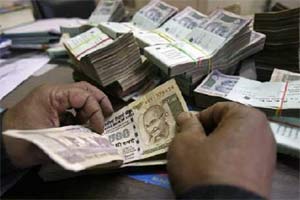On a day RBI governor Raghuram Rajan left key interest rates unchanged and hoped banks would pass on the benefit to consumers from the previous cut, lenders said they would lower their base rate only after demand for credit picks up. This, they said, could take a little time.
Meanwhile, some bankers indicated that although they had not cut base rates, they had seen compression of spreads due to subdued credit demand.
Bank of Baroda executive director Ranjan Dhawan told FE that even though the bank had not reduced the base rate, it had seen a compression of spreads in both retail and corporate loans due to the lack of demand for credit.
“We have an asset-liability committee meeting next week and will decide whether to cut rates. I believe it is an eventuality that rates will come down,” Dhawan said.
Speaking to a business news channel, SBI chairman Arundhati Bhattacharya said whenever there was excess liquidity in the system, transmission of policy changes was always asymmetrical. “I think what is happening at this point of time is that there is ample liquidity, but credit demand is very, very low. Unless we see credit demand picking up, cutting rates is going to take a little time,” Bhattacharya added.
Bhattacharya said even when rates had gone up by almost 300 bps in July 2013, banks did not raise lending rates. “So, you know, there is no clear or immediate transmission of monetary policy changes, I think we’ll have to be a little patient. The easing rate cycle has very much begun and we will, obviously, be part of that cycle,” she said.
A senior executive at a public sector bank said his bank had been forced to lower interest rates for certain borrowers just to avoid those accounts from moving to another bank. “At least by compressing our spreads, we have been able to compete with banks that have base rates at 10%,” he added.
Keki Mistry, vice-chairman & CEO of HDFC, said even though incremental cost of funds had come down, it would take some more time to get transmitted to lower lending rates and a rate cut would be decided by the asset-liability committee.
“The incremental cost of funds has reduced in the recent times. However, it takes some time before the cost of total borrowings reduces sufficiently to affect a rate cut. This is constantly monitored and at an appropriate time, the benefit of lower cost will be passed on to consumers,” said Mistry.
RBI data show non-food credit grew 11.02% y-o-y in the fortnight ended January 9 to R62.82 lakh crore. Last month, after the RBI lowered repo rate by 25 bps, United Bank and Union Bank cut their base rates by 25 bps each.
Meanwhile, banks have been lowering their deposit rates for quite sometime now, with SBI revising deposit rates four times since last July last year. Bankers also said that since the cut on deposit rates was only effective on fresh deposits, it took at least two quarters for a bank to realise the benefit of lower cost of funds. However, lenders said with a cut in base rate, all loans would become cheaper, which would affect their margins immediately. Banks’ deposit growth showed a growth of 11.82% y-o-y to R84.16 lakh crore in the fortnight ended January 9, according to RBI data.
At present base rate — the lowest lending rate — of all banks stands in the range of 10-11%. The base rate of SBI, ICICI Bank, HDFC Bank, United Bank and Union Bank stands at 10%. For lenders like IDBI Bank and PNB, it is at 10.25% and, for Federal Bank, the base rate stands at 11%.



